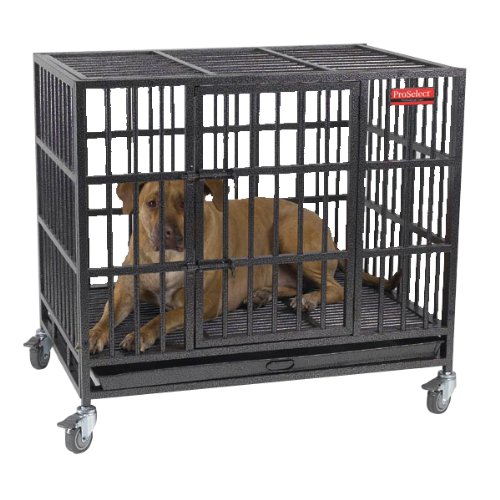
Do you have a Dachshund, Beagle, Shi Tzu, Lhasa Apso, or Pekingese? These, and other breeds of dogs are at a higher risk of developing a back problem called “intervertebral disc disease” (IVDD). Animals with IVDD show back or neck pain and tend to have trouble walking and doing normal daily activities. The signs of IVDD can be gradual or can be so sudden that your dog may go from being normal to being unable to walk within one day.
When you run your hand over your dog’s back, you should be able to feel the spine which is a long bony structure running from the back of the head all the way to the tip of the tail. The spine is made up of many small bones called vertebrae. These bones are lined up end-to-end. The spinal cord travels from the brain to the level of the hips, through a canal formed by holes in the center of the vertebrae (called the ‘spinal canal’). The function of the spine is to protect the spinal cord from damage.
The spinal cord is made up of nerves that travel from the brain to the rest of the body. Just like exits on a highway, nerves can exit the spinal cord through small openings at many places along the spine. This way different nerves can reach all parts of the body. Therefore, the spinal cord acts as the nerve ‘highway’ to allow nerves to travel from the brain to the rest of the body. For example, to move your finger, information and instructions start in the brain and travel down the spinal cord. The information travels in a nerve that exits the spinal cord between your shoulder blades and extends all the way down your arm to your finger muscles. The information reaches your muscles, and your finger moves.
As mentioned before, the spine is made up of vertebrae. If the spine was only made of bone, it would be unmovable, like having a metal rod in your back. In that case, you would not be able to bend or twist your back. In reality, in between the vertebrae of the spine are structures called ‘discs’. The discs are made of two parts; a soft central ‘nucleus’ surrounded by a tough ‘annulus’.
The term ‘intervertebral disc disease’ might make some more sense now. It is a disease of the discs, which are located between (“inter”) the vertebrae. There are two basic types of IVDD; there is a sudden severe form, and a slower progressing form. Both forms are due to a problem with the nucleus or disc pushing into the spinal canal and squishing the spinal cord. The spinal cord is very sensitive and when it is squished it becomes painful and the nerves don’t work properly.
In the sudden form of IVDD the annulus breaks and the soft nucleus squeezes out of the disc like toothpaste and is pushed into the spinal canal. There isn’t much extra room in the spinal canal, so the spinal cord becomes squished. The slower progressing form is usually caused by a weakening of part of the annulus, which allows the disc to bulge a bit and push into the spinal cord, without the annulus actually breaking. This is why the slower form has less severe signs, because it doesn’t immediately squish the spinal cord as much as the sudden form does.
There are discs between the vertebrae along the entire spinal cord, but the most common places that IVDD occurs are the neck and the lower back (near the hips). The signs are different for the different locations. In the neck, dogs suffering from IVDD tend to show signs of neck pain and there may be some difficulty moving the front legs. These dogs don’t like to move their head much, and may be reluctant to go up and down the stairs. When IVDD occurs in the lower back, signs tend to be more dramatic. These dogs will have trouble walking and will have lower back pain. The back legs will stagger and look weak. This is often very scary and upsetting for owners.
IVDD is not the only disease that can cause these signs. Many other diseases such as cancer, broken bones, and arthritis can cause similar signs. Your veterinarian will have to do some tests in order to figure out what the problem is. These tests may be done by your regular veterinarian or may be done at a specialty referral clinic. The majority of dogs with IVDD are normally sent to a referral clinic to be evaluated for surgery.
The tests that are usually done include basic blood work. Blood work gives your veterinarian an idea of how the major organs in the body are functioning. In addition, x-rays will be done focusing on the spine. In x-rays of a dog with IVDD, the disc will look abnormal. Often regular x-rays cannot show the problem clearly. In this case, ‘contrast x-rays’ may be done. Contrast x-rays are where Barium is injected into the spinal canal and outlines the spinal cord. This shows where the spinal cord is being squished. Also, as CT-scans and MRIs become more available, these are becoming common and very effective tools used to diagnose IVDD.
There are two ways to treat IVDD. The first way is strict rest (absolutely no exercise) plus anti-inflammatory drugs. This type of treatment is suggested for animals with very mild IVDD or with owners who cannot afford expensive surgery. In IVDD surgery, a small hole is made into a vertebrae and the nucleus is removed from the spinal canal. This takes the pressure off of the spinal cord. Surgery is recommended for severe cases of IVDD.
The prognosis is different for every dog. Dogs that have surgery quickly (within 24 hours of noticing the signs) tend to recover their leg function sooner and seem to be in less pain than dogs that have had signs of IVDD for a few weeks. Also keep in mind that some dogs will have more than one episode of IVDD, affecting different discs.
IVDD is a disease of the spine. The nucleus of the disc pushes into the spinal canal and squishes the spinal cord, causing damage to the nerves that travel in the spinal cord. It is an emergency, but with a quick diagnosis it is definitely treatable. Any animal with pain or trouble walking should always be taken to the veterinary clinic right away. This way you can be sure to give your pet a good chance of having a full and quick recovery.
 Probiotics for Dogs: Your Dogs Best Friends?
Credit: By Richard Bartz (Own work)
Probiotics for Dogs: Your Dogs Best Friends?
Credit: By Richard Bartz (Own work)
 Top 10 Most Intelligent Dog Breeds
IntroductionFollowing on fro
Top 10 Most Intelligent Dog Breeds
IntroductionFollowing on fro
 Important Tips on Choosing and Caring for Our Dogs and Best Friends
How well do you know your do
Important Tips on Choosing and Caring for Our Dogs and Best Friends
How well do you know your do
 Pro Select Empire Cages
Crate training a dog is a go
Pro Select Empire Cages
Crate training a dog is a go
 Boosting Your Dogs Health Through Food
We would do anything to keep
Boosting Your Dogs Health Through Food
We would do anything to keep
Copyright © 2005-2016 Pet Information All Rights Reserved
Contact us: www162date@outlook.com